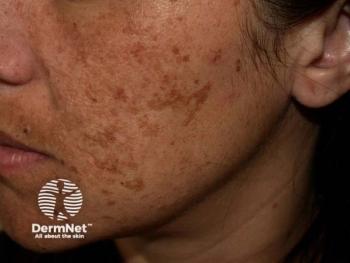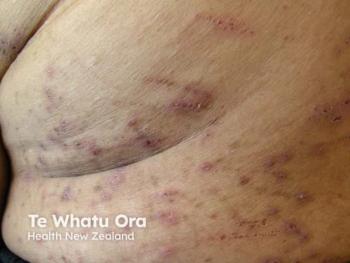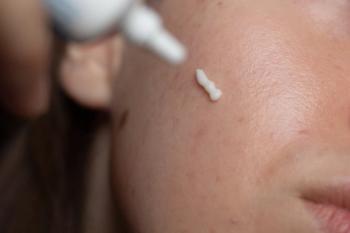
The Most Popular Vitiligo Content on TikTok Lacks Medical Accuracy
Key Takeaways
- A cross-sectional analysis of TikTok videos on vitiligo reveals a lack of reliable, evidence-based content, with most videos created by non-healthcare professionals.
- Healthcare provider-created videos scored higher in quality and accuracy but had lower engagement compared to non-professional content, which was more positively toned.
TikTok's vitiligo content reveals a critical need for reliable clinical information from HCPs, highlighting the gap between engagement and accuracy in health education.
With 1 in 5 Americans consulting TikTok before visiting a health care provider, accurate dermatological information on social media is more necessary than ever.1 The most-liked videos on TikTok under the hashtag “#Vitiligo” were reviewed in a recent cross-sectional analysis.2 It was found that most posts lack reliability and emphasize the need for more evidence-based, engaging content created by clinicians versus non-medical professionals.
“Evaluating the accuracy of this information is relevant in an era where digital platforms influence public health perceptions, particularly regarding conditions like vitiligo, which has a profound impact on the quality of life of those affected,” the researchers wrote.
Methods and Materials
In the cross-sectional study, reviewers filtered the most liked videos under the hashtag, generating a total of 398 videos for review. The first 100 that matched the inclusion criteria were selected. Content characteristics such as creator profession, gender, tone, description, length, and year of upload, as well as engagement metrics (comments, likes, and shares), were evaluated. Videos were categorized into 3 groups: educational, promotional, and storytelling.
Tools such as the Patient Education Materials Assessment Tool for Audiovisual Content (PEMAT A/V), modified DISCERN (mDISCERN), Video Information and Quality Index (VIQI), and Global Quality Score (GQS) were used to assess understandability, actionability, quality, accuracy, and content comprehensiveness. A novel tool called the V-TRACE (Vitiligo, Treatment, Representation, Autoimmune, Clinical, Evaluation) was also utilized, which measured clinical and social aspects relating to disease presentation, treatment, comorbidities, body image, and representation of people of color.
Quality and Engagement Analysis
About 25% of the analyzed videos were created by health care providers and 75% were made by non-health care providers. Videos by health care providers focused on education with significantly higher scores on mDISCERN (2.66 vs. 1.66), GQS (2.66 vs. 1.6), VIQI (12.33 vs. 10.00), and PEMAT A/V (8.66 vs. 6.33). About 96% were educational in character and 60% were considered to be high-quality. Only 13.3% of clips posted by non-health care professionals were deemed high-quality.
The videos posted by non-health care providers had higher levels of engagement, especially comments, with generally a more positive tone and were mostly created by females. Health care providers maintained a more neutral tone with fewer likes, comments, and shares, and had a more even split of male and female speakers. Only 13% of all the videos scored a 3 or higher on the mDISCERN scale, with the majority authored by health care providers.
Use of the V-TRACE Score
The median V-TRACE score was 2.33 and more health care professional videos had V-TRACE scores ≥ 3 compared to non-health care professionals. However, this was not statistically significant (52% vs. 38.7%). Clips by health care professionals did score higher in clinical domains like pathophysiology and treatment, while non-health care professionals emphasized other categories like body image and emotional experience. The authors inferred that this could be due to the greater psychosocial burden of vitiligo, particularly on female patients, combined with TikTok’s predominantly female user base.3 Videos that had a V-TRACE ≥ 3 had higher quality mDISCERN (2 vs. 1.66), GQS (2.33 vs. 1.66), and total VIQI scores (11.83 vs. 9.50). Videos that had a V-TRACE score below 3 had higher rates of views, likes, and shares.
Final Thoughts
The patterns analyzed in this study are very similar to findings in previous research evaluating
Overall, there is an evident gap between engagement and accuracy, limiting the high-quality medical information that is being shared on digital platforms. The authors recommend collaborating on content, adapting effective engagement strategies, and promoting a more positive tone in the way that non-health care professionals on TikTok do.
“By making HP content more engaging and accessible, we can bridge the gap, reduce misinformation, and help people access care that is effective and safe,” the authors concluded.
References
1. Montag C, Yang H, Elhai JD. On the Psychology of TikTok Use: A First Glimpse From Empirical Findings. Front Public Health. 2021;9:641673. Published 2021 Mar 16. doi:10.3389/fpubh.2021.641673
2. Rosenberg H, Hollander Y, Gordon CB, Rotem R, Horev A. Evaluating the Quality of TikTok Videos on Vitiligo: A Cross-Sectional Study. Int J Dermatol. Published online July 23, 2025. doi:10.1111/ijd.17962
3. Stephan AP, Hauc SC, Marks VA, Bercik R, Rickey L. TikTok misinformation and user engagement in female pelvic floor conditions. Neurourol Urodyn. 2024;43(8):1956-1961. doi:10.1002/nau.25519
Newsletter
Like what you’re reading? Subscribe to Dermatology Times for weekly updates on therapies, innovations, and real-world practice tips.


















